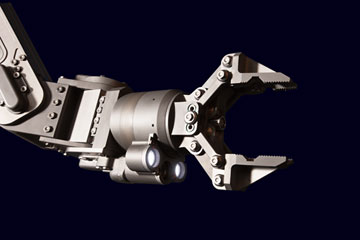
(3 of 6)
Welch told me that YRC teaches its drivers-in-training that truckers must make an average of 200 observations and 20 decisions per mile, and while those numbers are mere child's play for a computer, the tricky part is how many of the decisions are unpredictable. They rely on experience and intuition. This is why, for the foreseeable future, YRC's ideal truck driver isn't a robot. It's Arthur Cage of Memphis. In nearly 40 years of hauling and delivering freight, Cage, 64, has covered 5.6 million miles without an accident of any kind. The secret to his success starts with his attitude, he told me when I called him at home: like a computer, he never loses his cool or lets his concentration flag. But unlike a computer, Cage "always [expects] the unexpected." He studies the weather for hints of a slick road or a gusting wind. He peers into the cars ahead and beside and behind him, trying to intuit the next lurch or swerve or stomping of brakes before it happens. He's always learning. Sometimes he will follow an erratic driver to the next rest stop so he can add to his understanding of unpredictable hazards.
"I asked a man once, 'Back at mile marker 39, when your car started wobbling all over, what were you doing?' And he said, 'Lighting a cigarette.' You see? He and I were both lucky that the shoulder was firm where he ran onto it. If that man had done that same thing where the shoulder was made of gravel, taking his eyes off the road and weaving and bobbing, he would have lost control of that car. My job is to anticipate that." When Welch ponders the future of YRC's workforce, he thinks less about robots than about hiring and training young versions of Cage.
Yet there are many varieties of work under the big umbrella of the U.S. shipping industry, a nearly $17 trillion field, and many of them are robot-ready. Highly standardized and repetitive tasks are ideal for automation. Take loading and unloading cargo ships, for example. The vast majority of oceangoing freight travels in standardized intermodal containers, and robots are tirelessly adept at stacking and unstacking these boxes, moving them from ship to freight train to flatbed truck. Engineers envisioning the ports of the future foresee a continuing decline in the number of longshoremen, whose ranks have been hard hit by automation. At the Port of New York, for example, their numbers have been cut by some 90% since peaking in the 1960s.
Similarly, small-package handlers like Amazon and FedEx deploy robots to perform many of the tasks at their distribution centers around the world, because both firms work with standard-size boxes and envelopes. Last year Amazon paid $775 million to acquire Kiva Systems, a company that makes robots, zippy little orange mules that race through warehouses storing and retrieving merchandise.
YRC exists in a different world. Every shipment presents a new piece of an ever changing puzzle: how to pack all sorts of stuff, from long steel rods and bundles of lumber to barbecue grills and lightbulbs, neatly into outbound trucks. "It's always something different, and we haul this freight through traffic, along city streets, and eventually back our trucks right up to our customers' docks," said CEO Welch. "We'll be hiring drivers and forklift operators for as long as I can see."
Replaced by Robots
